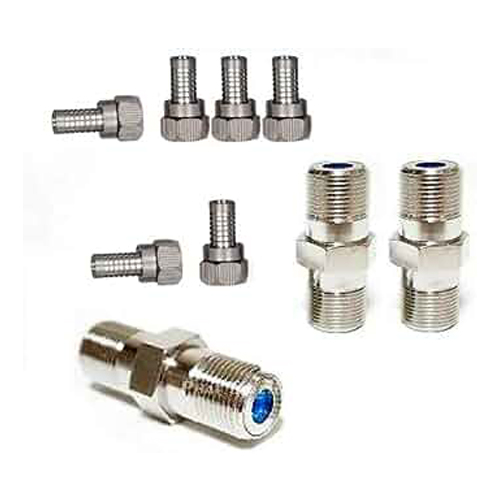Cable Wire Jointers
Boost Your Connectivity with Our Top-Rated Signal Boosting Products
Explore our wide range of mobile signal booster products and accessories designed for home, office, and commercial spaces.
Cable Wire Jointers: Overview and Applications
Cable wire jointers are essential components used to connect, splice, or terminate electrical cables or wires, enabling the creation of continuous electrical pathways and facilitating the transmission of power, signals, or data in various applications across industries. These jointers play a critical role in electrical installations, repairs, and maintenance, providing secure and reliable connections while ensuring proper signal transmission and integrity.

Key Features of Cable Wire Jointers
Construction Materials:
- Cable wire jointers are typically made of durable and electrically conductive materials such as copper, aluminum, or brass, ensuring low resistance and efficient electrical conductivity.
Design Variations:
- Cable wire jointers come in a variety of designs and configurations, including crimp-on, compression, solder, or mechanical connectors, each tailored to specific cable types, sizes, and termination methods.
Insulation and Protection:
- Many cable wire jointers feature insulating sleeves, coatings, or enclosures to protect the connection points from environmental factors such as moisture, dust, and vibration, ensuring long-term reliability and performance.
Termination Methods:
- Cable wire jointers employ various termination methods, such as crimping, compression, soldering, or screw terminals, to securely attach cables or wires to the connector contacts, providing robust and durable connections.
Compatibility and Standards:
- Cable wire jointers are designed to meet industry standards and specifications, ensuring compatibility with specific cable types, voltage ratings, current capacities, and environmental conditions.
Types of Cable Wire Jointers
Crimp-On Connectors:
- Crimp-on jointers utilize a crimping tool to compress and deform a metal sleeve or collar around the cable and connector, creating a secure and reliable electrical connection.
Compression Connectors:
- Compression jointers utilize a compression tool to compress a metal sleeve or ferrule onto the cable and connector, ensuring proper contact and electrical conductivity without the need for soldering.
Solder Connectors:
- Solder jointers require soldering to fuse the cable and connector together, creating a permanent and reliable electrical connection that is resistant to vibration and environmental factors.
Mechanical Connectors:
- Mechanical jointers utilize mechanical fasteners, clamps, or screws to secure the cable and connector together, providing a robust and adjustable connection suitable for high-vibration or harsh environments.
Applications of Cable Wire Jointers
Electrical Installations:
- Cable wire jointers are used in electrical installations, repairs, and maintenance tasks to connect, splice, or terminate cables or wires in residential, commercial, and industrial buildings.
Telecommunications:
- Cable wire jointers are utilized in telecommunications networks to connect and splice optical fibers, coaxial cables, or twisted-pair cables, ensuring reliable signal transmission and connectivity.
Power Distribution:
- Cable wire jointers are employed in power distribution systems to connect and terminate power cables, conductors, or busbars, enabling the efficient transmission and distribution of electrical power.
Data Networking:
- Cable wire jointers are used in data networking applications to connect and splice Ethernet cables, fiber optic cables, or coaxial cables, providing reliable data transmission and connectivity in networks and infrastructure.
Installation and Maintenance
Proper Installation:
- Cable wire jointers should be installed according to manufacturer guidelines and industry best practices, ensuring proper alignment, termination, and insulation to maintain electrical integrity and performance.
Regular Inspection:
- Cable wire jointers should be periodically inspected for signs of wear, damage, or corrosion, including loose connections, exposed conductors, or degraded insulation, and replaced or repaired as needed to prevent electrical faults or failures.
Environmental Considerations:
- Cable wire jointers should be selected and installed based on environmental factors such as temperature, humidity, and exposure to chemicals or contaminants, ensuring compatibility and reliability in specific operating conditions.
Quality Assurance:
- Cable wire jointers should be sourced from reputable manufacturers and suppliers, ensuring compliance with industry standards and specifications for performance, safety, and reliability in critical applications.
Conclusion
Critical Components for Electrical Connections
Cable wire jointers are indispensable components in electrical installations, telecommunications networks, power distribution systems, and data networking infrastructure, providing essential functionality for connecting, splicing, or terminating electrical cables or wires. With their diverse range of types, designs, and applications, cable wire jointers offer versatile solutions for ensuring proper signal transmission, power distribution, and connectivity in various industries and environments. By understanding the key features, types, and applications of cable wire jointers, users can select the appropriate jointers for their specific needs and ensure optimal performance, reliability, and safety in their electrical installations and systems.
